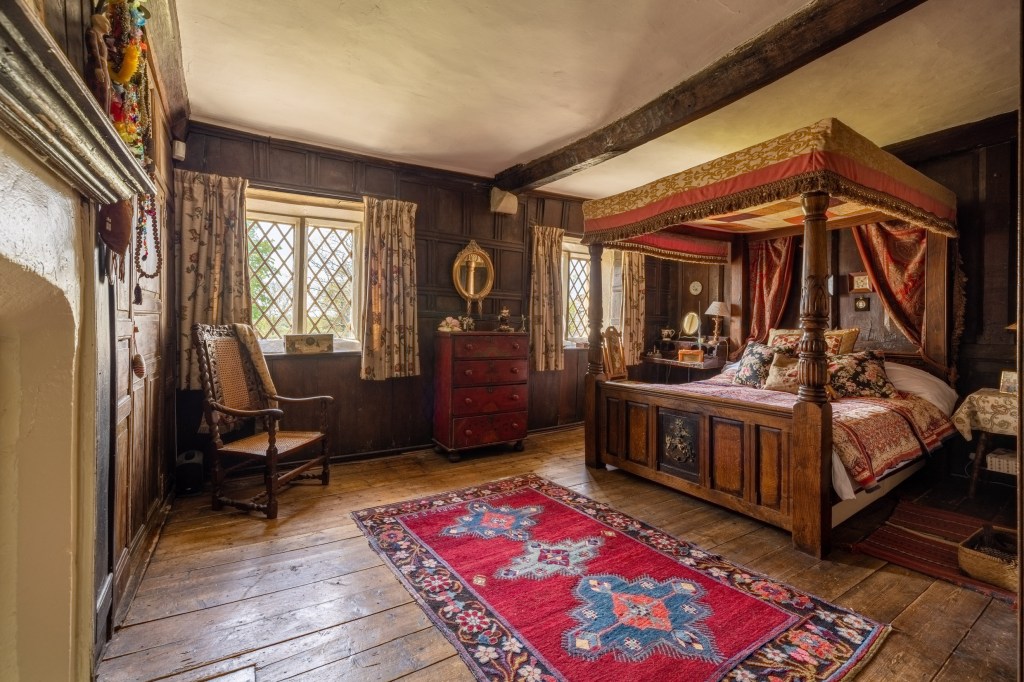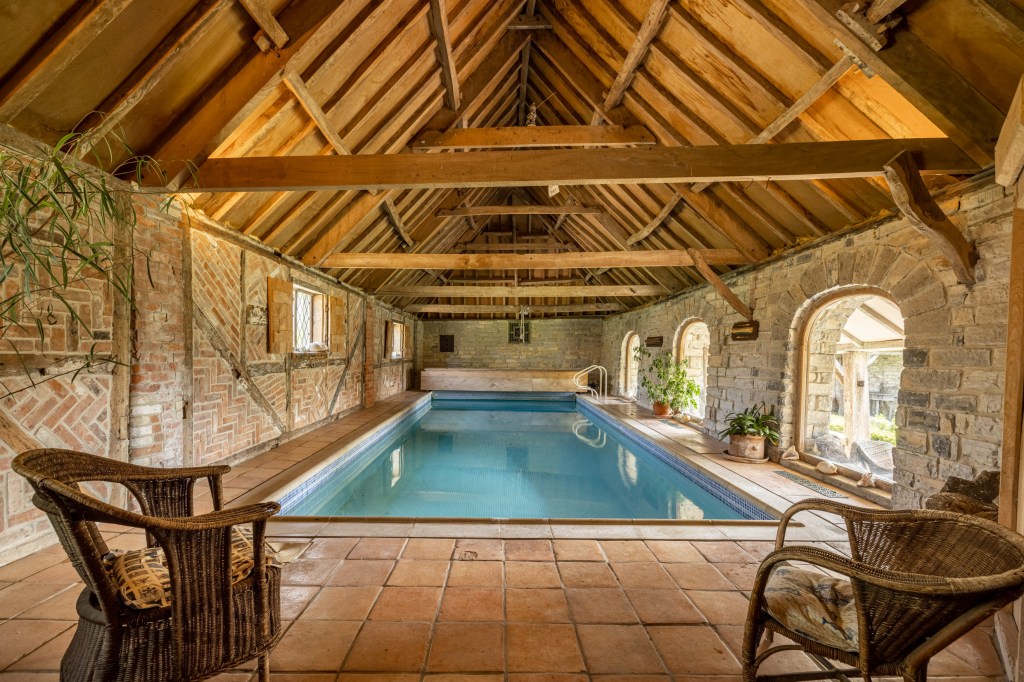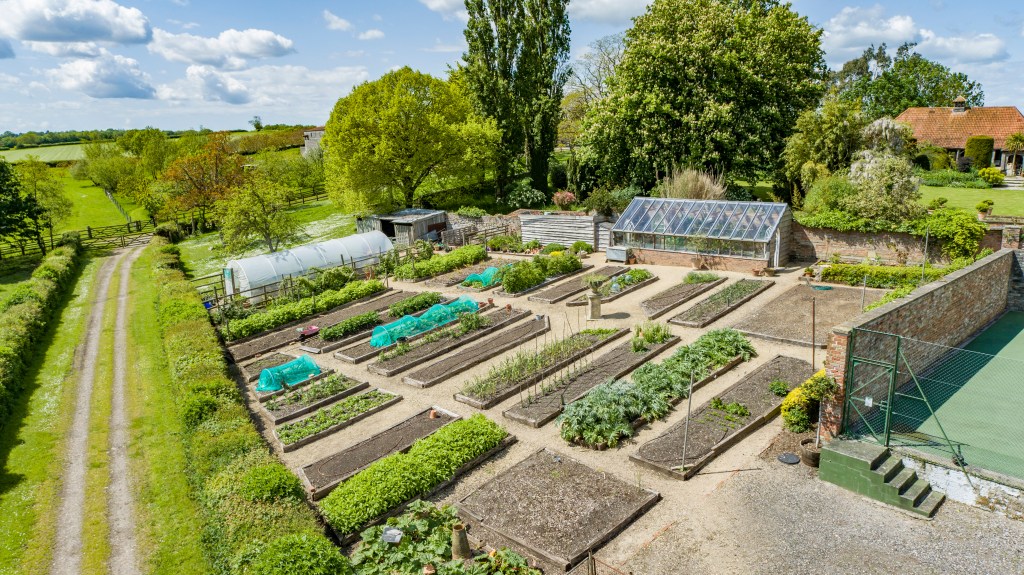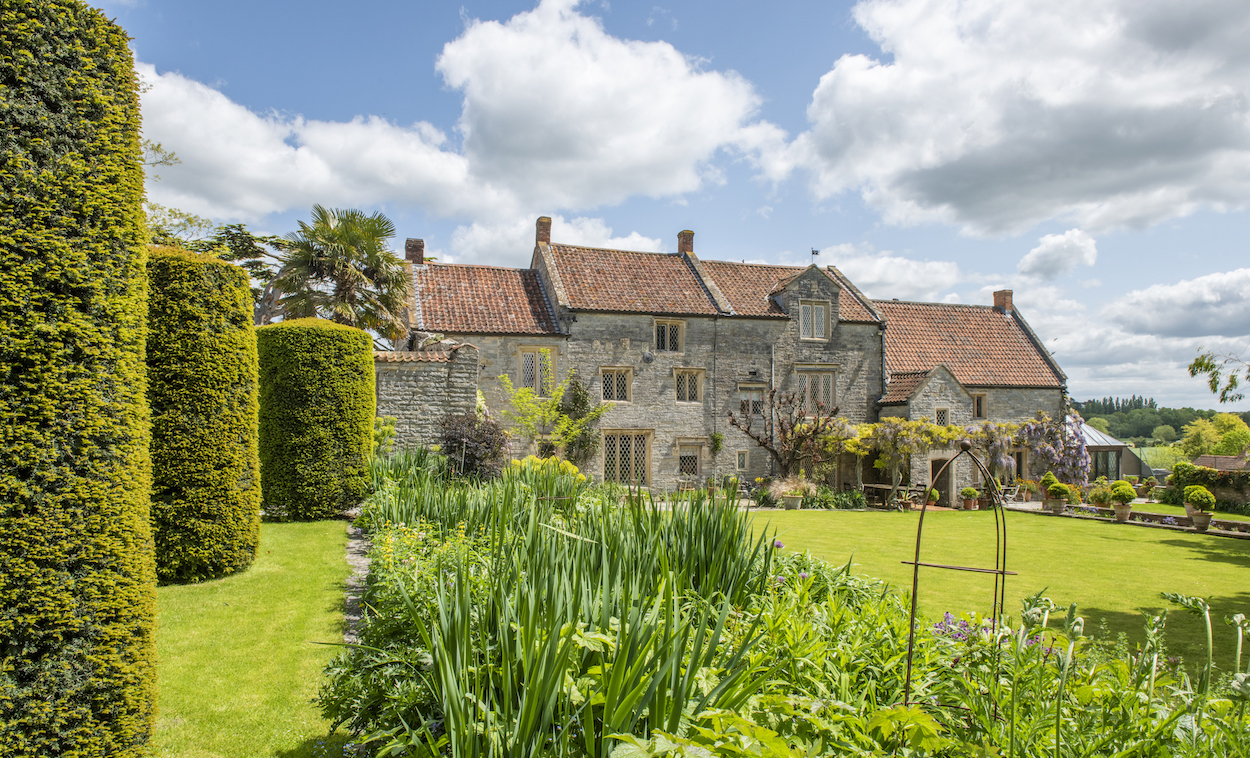Roger Saul founded Mulberry in 1971. He created their now iconic range of bags, belts and purses, but was ousted from the designer label’s board in the early Noughties. Undeterred, he reinvented himself as the purveyor of organic spelt cereal and flour brand, Sharpham Park. His range of products is de rigueur on every health-conscious Waitrose shopper’s weekly list.
There have been some intriguing historical discoveries over the past 45 years
Saul, now 73, can put many of his triumphs in both fashion and food down to Abbots Sharpham, his 268-acre Somerset estate, just outside Glastonbury, made up of a Grade II* Listed 15th-century eight-bedroom main house, two cottages, a deer park, indoor swimming pool – and field upon field of spelt. Here, he produces nearly 1,000 tonnes a year of the grain, a variety of wheat that Saul rightly predicted would become as hip as his handbags.
In the late 1970s, when Mulberry was becoming a global brand, Saul was living in a maisonette on Ladbroke Gardens, in West London, with his first showroom in premises underneath. ‘The area was amazing,’ he recalls, ‘with Notting Hill fast becoming the cool place to live, with great restaurants and bars.’
However, commuting to the Mulberry factory in Somerset twice a week – which meant having to stay over at his parents’ house – plus his impending marriage to his wife, Monty, a former Dior model, meant the couple hankered for a rural move. They spotted a newspaper ad for Abbots Sharpham, a semi-detached four-bedroom portion of a grand Tudor farmhouse 20 miles from Taunton, and went off to view it. ‘I loved it from the moment I saw it,’ Saul says, ‘but Monty was less sure. Thankfully she gave in.’

The home, which came with a two-acre walled garden, had been well cared for but needed a lot of TLC. ‘Under the surface, there was so much to do,’ Saul recalls. ‘The first winter we were there, we actually had snow drifts inside the house – and we had no central heating.’
Over the next few decades, the couple would go on to buy various portions and plots of the farming estate, uniting it into a lavish country retreat, along with the help and support of English Heritage. It involved so many stages, Saul says, that he finds it hard to remember every restoration job they have carried out.
‘Over the years we have uncovered more and more of its heritage,’ Saul says. ‘It was a historic gem waiting to be uncovered – both house and park alike had been divided up over the generations by feuding siblings.’ The first big restoration was of a dilapidated old barn Monty had bought her husband for a Christmas present from the farmer next door. Naming it the ‘Six-Eye Wagon House’, they created a pizza baking area and kitchen, a shower room and indoor swimming pool, and surrounded it all with cloister-like verandas, a sunken garden and a pergola leading off from what had been the vegetable garden.

More farming land was acquired in the 1990s and in 2003, shortly after Saul had left the fashion brand he had founded at a kitchen table, the rest of the farmhouse came up for grabs, giving the family the opportunity to restore the house as a whole, as well as the parkland and wider grounds. Along the way, they planted 4,000 English hardwood trees, created a deer park and orchards, and built an orangery, inspired by Roman limonaria.
The interiors of the main Tudor home – which has eight bedrooms and six reception rooms – are, of course, full of period character. Stone-mullioned windows, vast fireplaces, flagstone floors, beamed ceilings and carved wooden and armorial panels bearing heraldic devices have been enhanced by what Saul describes as his and Monty’s personal ‘English eclectic style, which brings each separate space alive’.
His designs for Mulberry inspired other treasured objects in Saul’s life: a red leather swivel bucket seat he created for the fashion brand’s ‘Home’ collection sparked the idea for the bespoke car seats in his Gullwing Mercedes. For the best views, he says it’s hard to beat the principal bedroom suite: ‘It has a moving picture window of the red deer in the park we planted with hardwood trees 30 years ago, with Glastonbury Tor in the background.’
There have been some intriguing historical discoveries over the past 45 years. In the same week they uncovered a fine 17th-century ladies’ shoe behind panelling, they found a coin in the garden dating from the same period. More recently, when clearing out some precariously rundown store sheds, they unearthed fragments of ammonites.
‘I had at last found where Thomas Hawkins, the famous Victorian fossil hunter and dealer, would have restored the Ichthyosaurs and Plesiosaurs that he sold to the Natural History Museum,’ Saul says. ‘Hawkins was more than a bit of a rascal and had an Italian plasterer recreate some of the missing bits of his collections.’

Saul’s move into spelt farming in 2003 was suggested by his sister, who was sadly suffering from secondary cancer, and was trying to find a diet to balance acidity and alkalinity. It turned out Abbots Sharpham was the perfect place to grow the grain – an archaeologist discovered it had been farmed there thousands of years ago.
Saul and Monty have, however, now put the estate on the market. For sale as a whole for £8 million, it is also up for grabs in four separate lots (with the business for sale completely separately). The first main lot takes in the farmhouse, pool, a range of outbuildings, deer park, two cottages and about 44 acres, and the second the flour mill, agricultural buildings, solar plant and yards, as well as a walnut and mixed fruit orchard.
Selling up, Saul says, is the hardest decision they have ever had to make. ‘We are fit and well, but are conscious that we have created a large, amazing property and that it is time for someone younger to take on the mantle of custodian,’ he says. ‘We are just so lucky to have been able to bring it back together and to life. We know it is time for us to make the move before it is made for us.’
Abbots Sharpham is for sale with Carter Jonas Rural (carterjonas.co.uk) and Roderick Thomas (roderickthomas.co.uk)







Comments